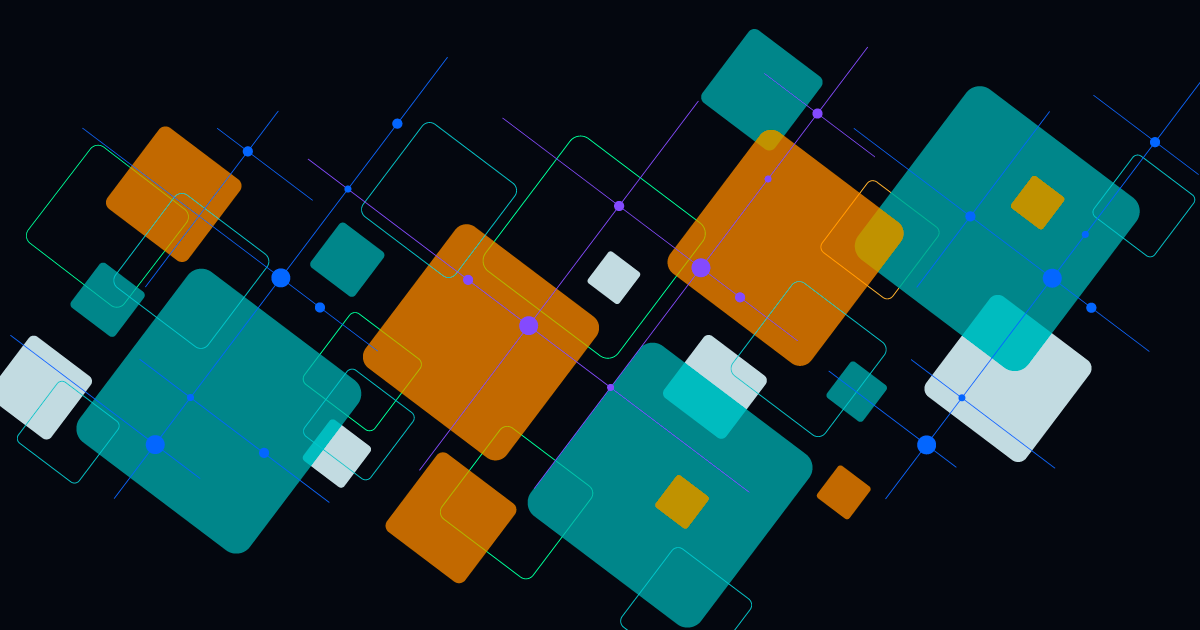
How to Revolutionize Your NOC with the Resolve Capabilities Model
Subscribe to receive the latest content and invites to your inbox.
Network operations centers (NOCs) are under increasing pressure to improve efficiency, reduce downtime, and accelerate incident resolution.
Yet many struggle to define a clear NOC automation strategy. When your team is deep in the trenches, it's easy to lose sight of the long term:
- How do you assess where you are today and build a roadmap that delivers real business impact?
- How can you ensure that NOC automation is scalable, fortifies your organization's bottom line, and meaningfully improved customer experience?
The answers lie within our framework: the Resolve Capabilities Model.
This model was developed in tandem with customer conversations about NOC automation, aspirations, broader tech challenges, and more. The X-axis focuses on the impact of your automations, evolving from reactive problem-solving to proactively preventing issues before they occur. Meanwhile, the Y-axis is all about taking single solutions and turning them into department-wide orchestrations.
In short, our model is designed to help organizations like yours build a NOC automation strategy that really drills down to granular detail, and to incorporate new learnings into your NOC roadmap. So, without further ado, let's explore the Resolve Capabilities Model and how your NOC can leverage it to achieve transformational success!
Level One: Tech Specificity
The Resolve Capabilities Model is designed to help you scale NOC automation, starting with specific parts of a process before building up to having direct impact on business outcomes.
The first level of our model is focused on cutting toil.
Cutting Toil to Stop the Bleeding
Manual processes are time-consuming, error-prone, and labor-intensive. NOC technicians end up spending hours inputting data, configuring systems, or troubleshooting issues.
Leveraging NOC automation for those specific tasks substantially benefits organizations and customers. Automation improves efficiency by reducing the time required to complete tasks and minimizing human error, leading to more accurate and reliable systems. At this level, the focus is on NOC automation that cuts toil i.e. repetitive tasks that can free up valuable resources!
Once you stop the bleeding by identifying gaps in your NOC's tech environment and acquiring the best tools to fill them. Tech gaps can hobble your organization in the same way manual input can, fragmenting processes service delivery.
However, teams that carefully study NOC automation solutions can streamline routine monitoring, troubleshooting, and maintenance tasks, enabling them to focus on more complex and value-driven activities.
Level 2: Focusing on Processes
Level 2 is about building something more advanced and collaborative: streamlining NOC processes. At this level, you'll start to see improved collaboration across silos. Organizations need a de-siloed view of their tech ecosystem to be able to rapidly respond to issues.
Examples of NOC automations and processes that you should focus on at this stage include, but are not limited to:
- Incident Management: By integrating automated workflows with monitoring tools, teams can be alerted to problems in real-time, and predefined actions can be triggered to resolve common issues without manual intervention.
- Provisioning and De-provisioning of Resources: This element helps your team maintain compliance with security policies and provides accurate audit trails for access management.
- Patch Management: Automating the identification, testing, and deployment of security patches and updates ensures that systems remain secure and up to date.
There are other NOC automations and best practices that I could touch on, of course, but these three are great places to get your network automation initiative underway.
They're also great for building toward that cross-team functionality, which we're now going to jump into!
Level 3: Cross-Functional Processes
Reaching level three of the Resolve Capabilities Model means you've identified, and taken action on, several core NOC automation opportunities.
Your NOC team begins to grow more flexible and react to fires quicker. With these fundamentals achieved, you can now turn your eye to level three of the Resolve Capabilities Model: cross-functional processes.
As I mentioned earlier, automating processes is only half of the efficiency battle. Organizations also need to be able to see every facet and every component of their digital ecosystem in real time to be able to improve service delivery metrics and SLAs.
NOC Automation Best Practices for An Effective Start
Here are some best NOC automation practices to bear in mind as you address additional functions and bring your teams together:
- Foster Cross-Team Collaboration from the Start: Involve all relevant teams—network operations, security, IT support, and development—early in the NOC automation planning process. By including multiple stakeholders in discussions about automation goals and challenges, teams can ensure that tools serve the broader organizational needs.
- Standardize Processes and Workflows: To break silos down effectively, ensure that automation focuses on standardizing workflows across teams. Consistent processes for incident management, change control, and resource provisioning can help bridge the gap between different departments, reducing the likelihood of fragmented or duplicated efforts.
- Implement Orchestration Tools: Choose NOC automation tools that offer cross-functional integrations, allowing different teams to work from a shared platform. A unified dashboard that integrates network monitoring, security alerts, and incident management, for example.
- Promote Shared Metrics and KPIs: Set up shared performance metrics and key performance indicators (KPIs) across teams to align objectives and encourage collective ownership of outcomes. For instance, metrics such as network uptime, response times, or user satisfaction can be tracked and improved through coordinated efforts.
- Promote Continuous Learning and Adaptation: Encourage teams to provide feedback on NOC automation workflows and identify areas for improvement. Regularly reviewing your automation strategy can ensure that tools evolve with the organization's needs and technology landscape, reducing the risk of silos forming again over time.
The hidden benefit of encouraging cross-team collaboration here is that the entire organization becomes psychologically invested in NOC automation. They support your initiative because they can see firsthand the value and agility it creates for the organization and the customers you serve. In this way, automation is an incredibly powerful means of de-siloing your teams and uniting them around a single, fundamental understanding of your digital ecosystem.
Level 4: Focusing on Business Outcomes
Now that you've already identified a few NOC automation opportunities, acted upon them, and gotten multiple teams invested in the project, it's time to reach the culmination of the Resolve Capabilities Model: business outcomes.
Well-implemented, cross-functional NOC automation enables:
- Faster Time to Market and Increased Agility: With automation in place, organizations can quickly adapt to changing market conditions, customer demands, and emerging technologies. By automating manual tasks and approvals, businesses can accelerate decision-making and product development cycles, allowing them to bring new products or features to market faster—a major competitive advantage.
- Improved Customer Experience: NOC automation ensures that teams can respond to customer needs faster. Whether it's automating support ticket routing, order processing, or service delivery, businesses can provide faster and higher-quality customer interactions. This leads to increased customer satisfaction, driving long-term success.
- Employee Satisfaction and Retention: By offloading monotonous, repetitive tasks to automation, employees can focus on more creative, and strategic work. This improves job satisfaction and reduces burnout, leading to higher employee retention. Additionally, employees who see automation's benefits are more likely to champion the technology.
- Cost Savings and Resource Optimization: NOC automation cuts down on operations costs. By reallocating resources from routine tasks to strategic initiatives, organizations can ensure that their teams focus on activities that have a greater impact on growth. Additionally, automation can identify inefficiencies, enabling organizations to optimize and reduce waste.
Leveraging the Resolve Capabilities Model
So, to sum up, the Resolve Capabilities Model offers a structured, scalable approach for NOC automation, starting with basic processes and building up to impactful business outcomes. By beginning with specific technical processes and moving toward cross-functional collaboration, NOCs can break down silos, streamline workflows, and ensure their teams are working together toward common goals.
Ultimately, the true power of the Resolve Capabilities Model lies in its ability to drive meaningful business results. From faster time-to-market to improved customer experiences and more, our model transforms the NOC into a critical strategic asset that can help your organization stay competitive in an increasingly automated world.
Want to see more conversation around the Resolve Capabilities Model and what it can do for your NOC automation? Watch our on-demand webinar and leverage our approach for yourself!






